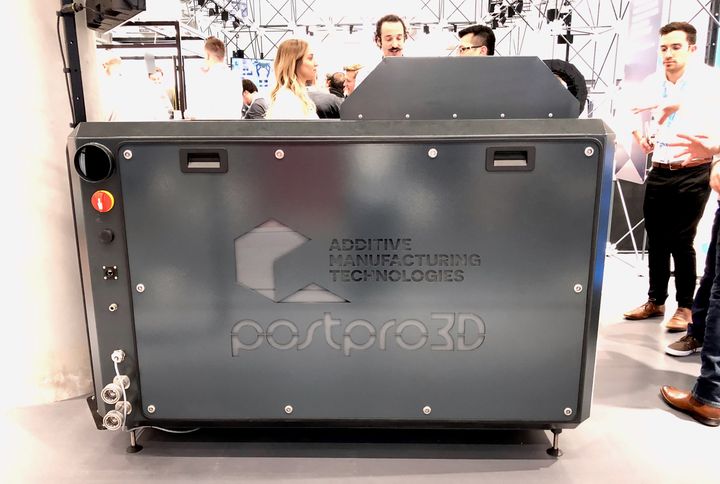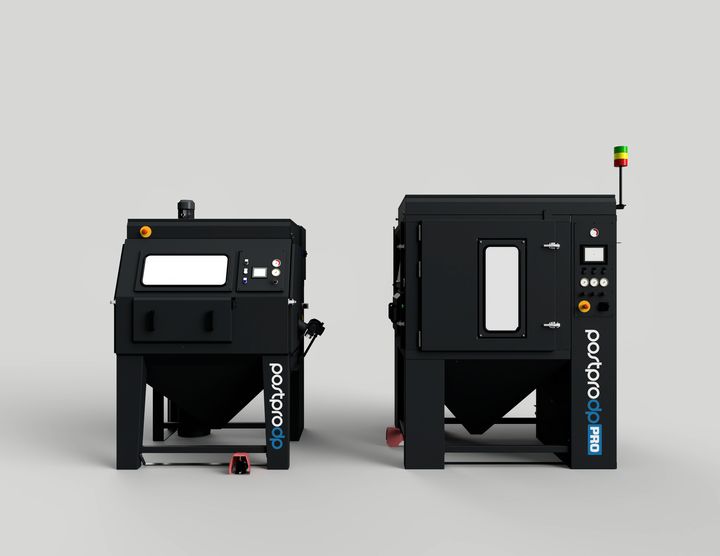
I spoke with Joseph Crabtree of Additive Manufacturing Technologies (AMT) to find out the latest developments at the producer of automated 3D print post-processing equipment.
While we’ve been keeping up with the company for some time, I first met Crabtree at Formnext 2019, where the company displayed their powerful post-processing solutions for 3D printing. While chemical post-processing of 3D prints has been around for quite a while, AMT makes it much smarter, as their automated solution uses “recipes” to ensure highly consistent and near-perfect results.
Crabtree said the company has been extremely busy since Formnext, and even during the COVID-19 crisis. As one might expect, they have been broadening their reach by adding an office in Taiwan to cover the Asia-Pacific region, as well as building out a much larger reseller network.
AMT’s PostProDP

In addition to expanding their sales and marketing capacity, AMT is still developing the technology. The PostPro3D Pro and PostPro3D Mini are joined by new de-powdering systems, the PostProDP and PostProDP Pro. These units are now undergoing testing at a number of friendly vendors.
They are available now, and come in two different sizes to accommodate varying needs by clients.
Crabtree explained the de-powdering systems includes several features that should make them very easy to use, something of great value in a production facility. There’s an emphasis on powder recyclability, which also helps the financials.
Large doors on the PostProDP units allow for easy loading and unloading of prints. Cartridge filters ensure a completely dust-free operation. Used powder is collected in a sealed dust bin and potentially re-used in subsequent prints.
The lead-time for receiving a PostProDP is currently 4-6 weeks, and the two models are currently priced at US$30K and US$40K.
AMT During COVID-19
I asked Crabtree how the company is faring during the crisis, as many businesses are suffering. However, Crabtree said their business is doing well, with a “significant” number of units on order.
The reason for this, he believes, is that there is an uptick in applications for post-processing. He says there are a couple of interesting reasons for this:
- Broken supply chains worldwide push companies toward emergency 3D print solutions, and these require post-processing equipment.
- Proper post-processing produces smooth surfaces, which are useful for skin-contact applications; “this was a nice to have before, but is now a must have.”
- Growth in medical production by service bureaus has required additional post-processing equipment.
Post-processing is typically done manually, and automated equipment such as that sold by AMT is able to reduce shift sizes and thus increase social distancing in the workplace.
Crabtree adds that automation tends to reduce costs to achieve the same quality on post processing. In fact, he says their company hopes to automate the entire process eventually.
That’s not quite the situation yet, but AMT is on the case.
Via AMT
